Comments / Questions (47)
![]() ANGELA wrote:
ANGELA wrote:
Posso lavorare il progetto con i ferri diritti?
08.12.2025 - 09:02DROPS Design answered:
Buonasera Angela, questo modello è lavorato in tondo: può lavorare con i ferri dritti aggiungendo una maglia di vivagno per lato per la cucitura. Buon lavoro!
08.12.2025 - 22:36
![]() Laure wrote:
Laure wrote:
Merci
24.11.2025 - 11:48
![]() Laure wrote:
Laure wrote:
Bonjour, je ne comprends pas "Augmenter ensuite pour le raglan ainsi: Tous les 2 tours pour le devant et le dos et tous les 4 tours pour les manches (= on augmente alternativement 4 et 8 mailles à chaque tour d'augmentations" concrètement on augmente côté devant mais pas côté manche autour du marqueur ????
23.11.2025 - 10:21DROPS Design answered:
Bonjour Laure, concrètement vous allez effectivement augmenter tous les 2 rangs seulement 4 mailles: début du devant/fin du devant + début du dos/fin du dos (comme avant); et tous les 4 rangs, vous augmentez comme avant vos 8 mailles: devant, dos et manches. Bon tricot!
24.11.2025 - 09:38
![]() Csilla wrote:
Csilla wrote:
Befejeztem a szemek szaporítását a vállrészen, de a hossza csak 14 cm. A kötéspróbában 22 sor = 10 cm. Ha jól értelmeztem összesen 32 sort kötünk a szaporításokkal. Hogyan lenne 32 sor 22 cm? Egyszerűen nem értem. Kérem segítsenek!
16.11.2025 - 14:21
![]() Peyton wrote:
Peyton wrote:
Hi! I'm about to divide for the body and sleeves for the size medium, and confused as to why the raglan seams aren't lining up with the number of stitches I'm supposed to set aside for the sleeves.
15.11.2025 - 17:55DROPS Design answered:
Hi Peyton, Your raglan lines are finished when you divide for the body and sleeves, so they do not necessarily line up with the divisions. Regards, Drops Team.
17.11.2025 - 07:21
![]() Rachael wrote:
Rachael wrote:
Hi, Where is the chest measurement for this item, this does not appear to be on the diagram provided or is it the number at the 'hem' of the jumper schematic? Thanks
04.11.2025 - 14:41DROPS Design answered:
Hi Rachael, There is a size chart at the bottom of the pattern with all the measurements for the different sizes. Regards, Drops team.
05.11.2025 - 06:47
![]() Pilar wrote:
Pilar wrote:
I am not sure I understand the second increases for the Yoke when it says 2nd round justBody and the 4th round shoulders, do shoulders mean increases in both Body and shoulders,?because it says 4 stitches and 8 stitches increase in each round Thanks Pilar
13.10.2025 - 20:33DROPS Design answered:
Hi Pilar, The first increase is only on the front and back pieces (4 increased stitches), the second increase is on the front and back pieces as well as the sleeves (8 increased stitches). Continue alternately like this for the specified number of times in your size. Regards, Drops Team.
15.10.2025 - 07:04
![]() Pen wrote:
Pen wrote:
Bezüglich der Zunahmen nurnoch für den Körper bzw. jede 4. Runed Ärmel. Nehme ich dann zb. vor dem 1. Markierer zu, dahinter aber nicht, also wie folgt? Vorderteil -> Ärmel l: Zunahme - 2 rechtstricken - KEINE zunahme Ärmel l - > Rückenteil: KEINE Zunahme - 2 rechtstricken - Zunahme Rückenteil -> Ärmel r: Zunahme - 2 rechtstricken - KEINE Zunahme Ärmel r -> Vorderteil: KEINE Zunahme - 2 rechtstrick - Zunahme Liebe Grüße
01.10.2025 - 19:39DROPS Design answered:
Hallo, entschuldigen Sie die späte Antwort. Sie nehmen in den Runden, in denen Sie nicht am Ärmel zunehmen, wie folgt zu: Nach dem 1. Markierer keine Zunahme und vor dem 2. Markierer keine Zunahme (= Ärmel). Nach dem 2. Markierer Zunahme und vor dem 3. Markierer Zunahme (Vorderteil). Nach dem 3. Markierer keine Zunahme und vor dem 4. Markierer keine Zunahme (= Ärmel). Nach dem 4. Markierer Zunahme und vor dem 1. Markierer Zunahme (Rückenteil).
04.11.2025 - 21:31
![]() Micheline wrote:
Micheline wrote:
Comment trouver un modèle qui commence par le bas merci
21.09.2025 - 21:48DROPS Design answered:
Bonjour Micheline, cherchez parmi les modeles ICI. Bon tricot!
21.09.2025 - 22:04
![]() Camela wrote:
Camela wrote:
Why are the numbers of stitches knitted to the center front different on the British pattern from the American? i.e., on the British it says 37 and on the American it says 48? (size XL).
14.09.2025 - 19:34DROPS Design answered:
Dear Camela, there is a typo in the US version of the pattern; the British version is correct. The marker is inserted after 37 stitches for size XL. Happy knitting!
15.09.2025 - 00:30
Midnight Glow#midnightglowsweater |
|
 |
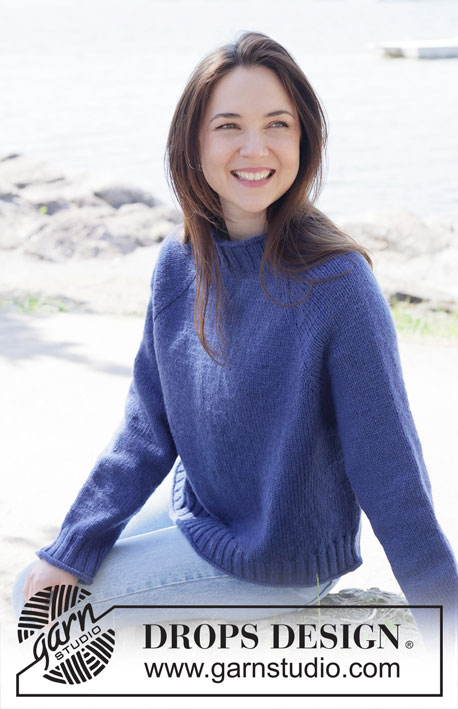 |
Knitted jumper in DROPS Nepal. The piece is worked top down with raglan and rolled edges. Sizes S - XXXL.
DROPS 254-39 |
|
|
------------------------------------------------------- EXPLANATIONS FOR THE PATTERN: ------------------------------------------------------- RAGLAN: Increase 1 stitch by making 1 yarn over, which is then worked on the next round as follows: BEFORE MARKER-THREAD: Slip the yarn-over off the left needle and replace it twisted (insert the left needle through the back when replacing it). Knit the front loop of the yarn-over to avoid a hole. Then work the new stitch in stocking stitch. AFTER MARKER-THREAD: Knit the yarn-over through the back loop to avoid a hole. Then work the new stitch in stocking stitch. DECREASE TIP: Decrease 1 stitch on each side of the marker-thread as follows: Work until there are 3 stitches left before the marker-thread, knit 2 together, knit 2 (marker-thread sits between these 2 stitches), slip 1 stitch knit-wise, knit 1 and pass the slipped stitch over the knitted stitch (2 stitches decreased). INCREASE TIP-1 (evenly spaced): To work out how to increase evenly, count the total number of stitches on the needle (e.g., 164 stitches) and divide by the number of increases to be made (e.g., 20) = 8.2. In this example, increase by making 1 yarn-over after approx. each 8th stitch. On the next round work the yarn overs twisted to avoid holes. ------------------------------------------------------- START THE PIECE HERE: ------------------------------------------------------- JUMPER – SHORT OVERVIEW OF THE PIECE. The pattern uses both long and short needles; start with the length which fits the number of stitches and change when necessary. The neck and yoke are worked in the round with circular needle, from the right back shoulder, top down. When the yoke is finished, it is divided for the body and sleeves. The body is continued in the round, while the sleeves wait. The sleeves are worked in the round, top down. NECK: Cast on 80-88-88-104-104-112 stitches with circular needle size 5 mm and DROPS Nepal. Change to circular needle size 4 mm (casting on with a larger needle size makes the cast-on edge elastic) and knit 4 rounds. The beginning of the round is the right back shoulder. Work rib in the round (knit 2, purl 2) for 6-6-6-7-7-7 cm. Insert 1 marker after the first 29-31-31-37-37-39 stitches (approx. mid-front); the piece is now measured from here. YOKE: Insert 4 marker-threads, without working the piece and inserting each thread between 2 knitted stitches from the rib (these are raglan-stitches which are continued in stocking stitch). Count 1 stitch and insert 1 marker-thread before the next stitch, count 16-16-16-20-20-20 stitches (= sleeve), insert 1 marker-thread before the next stitch, count 24-28-28-32-32-36 stitches (= front piece), insert 1 marker-thread before the next stitch, count 16-16-16-20-20-20 stitches (= sleeve), insert 1 marker-thread before the next stitch, there are 24-28-28-32-32-36 stitches left (= back piece). Change to circular needle size 5 mm and work stocking stitch in the round. AT THE SAME TIME increase for RAGLAN – read description above, before/after the 2 raglan-stitches by each marker-thread (in each transition between the body and sleeves) every 2nd round a total of 8-8-11-9-7-7 times = 144-152-176-176-160-168 stitches (= 8 increased stitches on each increase-round). Remember to maintain the knitting tension. Then increase for raglan as follows: Every 2nd round on the front and back pieces and every 4th round on the sleeves (= alternately 4 and 8 increased stitches on each increase-round). Repeat these increases a total of 16-16-16-18-24-26 times on the front and back pieces (8-8-8-9-12-13 times on the sleeves). After the last increase there are 240-248-272-284-304-324 stitches and the yoke measures approx. 22-22-25-25-28-30 cm from the marker mid-front. Continue working without further increases until the yoke measures 22-23-25-25-28-30 cm from the marker. Now divide for the body and sleeves. DIVIDE FOR BODY AND SLEEVES: On the next round work as follows: Knit 1 (belongs to the back piece), place the next 48-48-54-56-58-60 stitches on a thread for the sleeve, cast on 10-12-14-18-20-22 stitches (in side mid-under sleeve), knit 72-76-82-86-94-102 (= front piece), place the next 48-48-54-56-58-60 stitches on a thread for the sleeve, cast on 10-12-14-18-20-22 stitches (in side mid-under sleeve), knit the last 71-75-81-85-93-101 stitches (= back piece). The body and sleeves are finished separately and the next round begins under the sleeve. BODY: = 164-176-192-208-228-248 stitches. Insert 1 marker in the middle of the 10-12-14-18-20-22 cast-on stitches under the sleeve. Work to the marker and continue stocking stitch in the round until the piece measures 44-46-48-48-50-52 cm from the marker mid-front. Change to circular needle size 4 mm and work rib (knit 2, purl 2), AT THE SAME TIME increasing 20-20-24-24-28-28 stitches evenly on the first round – read INCREASE TIP = 184-196-216-232-256-276 stitches. When the rib measures 6-6-6-7-7-7 cm, knit 4 rounds, then cast off a little loosely with knit. The jumper measures approx. 51-53-55-56-58-60 cm from the marker mid-front and approx. 56-58-60-62-64-66 cm from top of shoulder. SLEEVES: Place the 48-48-54-56-58-60 sleeve-stitches from the thread on one side of the piece on short circular needle size 5 mm and knit up 1 stitch in each of the 10-12-14-18-20-22 stitches cast on under the sleeve = 58-60-68-74-78-82 stitches. Insert a marker-thread in the middle of the 10-12-14-18-20-22 stitches under the sleeve. Start at the marker-thread and work stocking stitch in the round. When the sleeve measures 3 cm, decrease under the sleeve – read DECREASE TIP. Decrease 2 stitches every 7-7-4-3-2½-2 cm a total of 5-5-8-10-11-12 times = 48-50-52-54-56-58 stitches. Continue working until the sleeve measures 39-39-38-36-34-32 cm from the division. Change to double pointed needles size 4 mm. Work rib (knit 2, purl 2), AT THE SAME TIME increase 4-6-4-6-4-6 stitches evenly on the first round = 52-56-56-60-60-64 stitches. When the rib measures 6-6-6-7-7-7 cm, knit 4 rounds, then cast off a little loosely with knit. The sleeve measures approx. 46-46-45-44-42-40 cm from the division. |
|
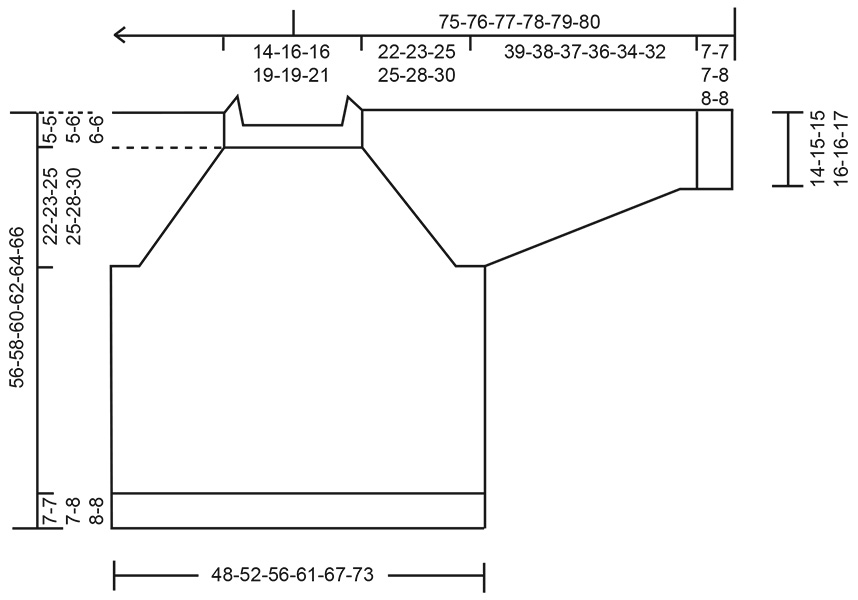 |
|
Have you finished this pattern?Tag your pictures with #dropspattern #midnightglowsweater or submit them to the #dropsfan gallery. Do you need help with this pattern?You'll find 27 tutorial videos, a Comments/Questions area and more by visiting the pattern on garnstudio.com. © 1982-2025 DROPS Design A/S. We reserve all rights. This document, including all its sub-sections, has copyrights. Read more about what you can do with our patterns at the bottom of each pattern on our site. |
|







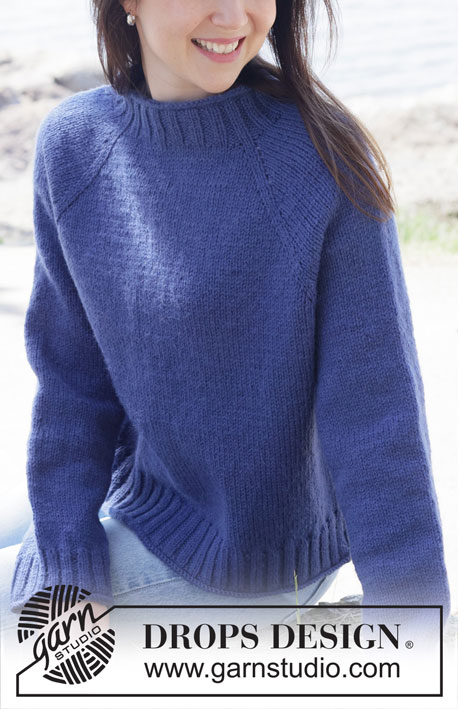
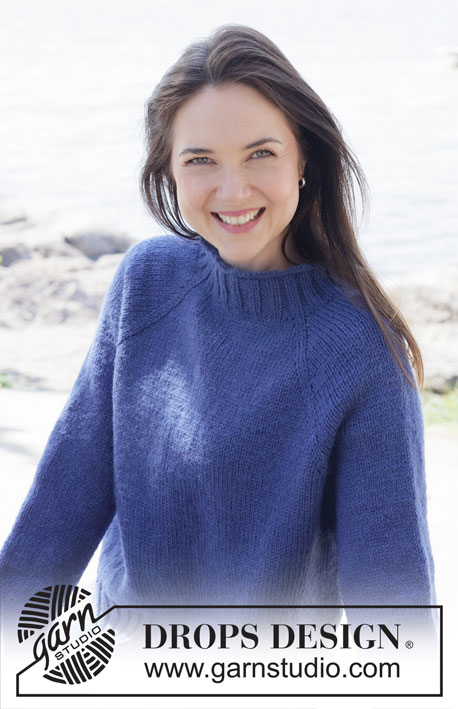
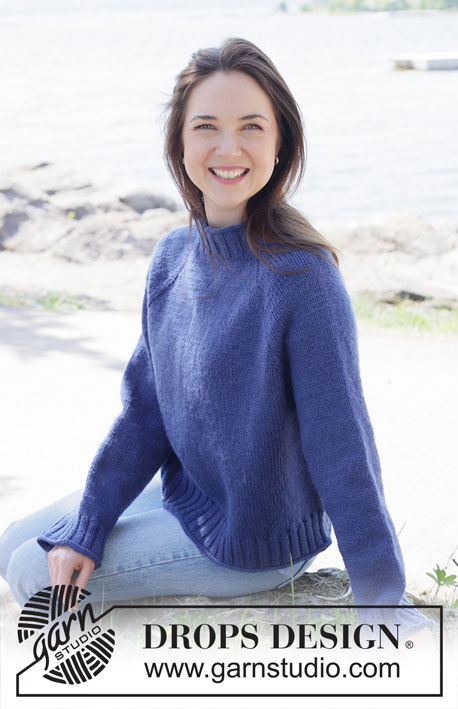
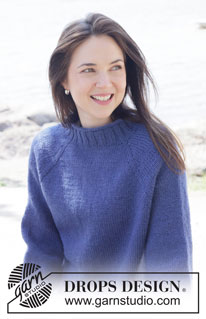
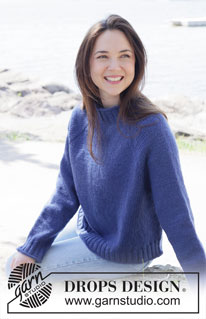
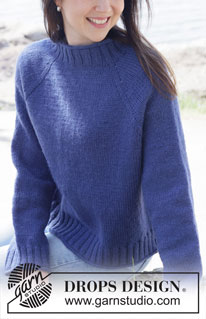
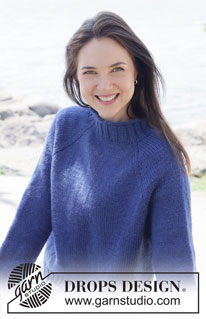
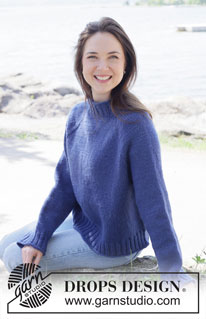
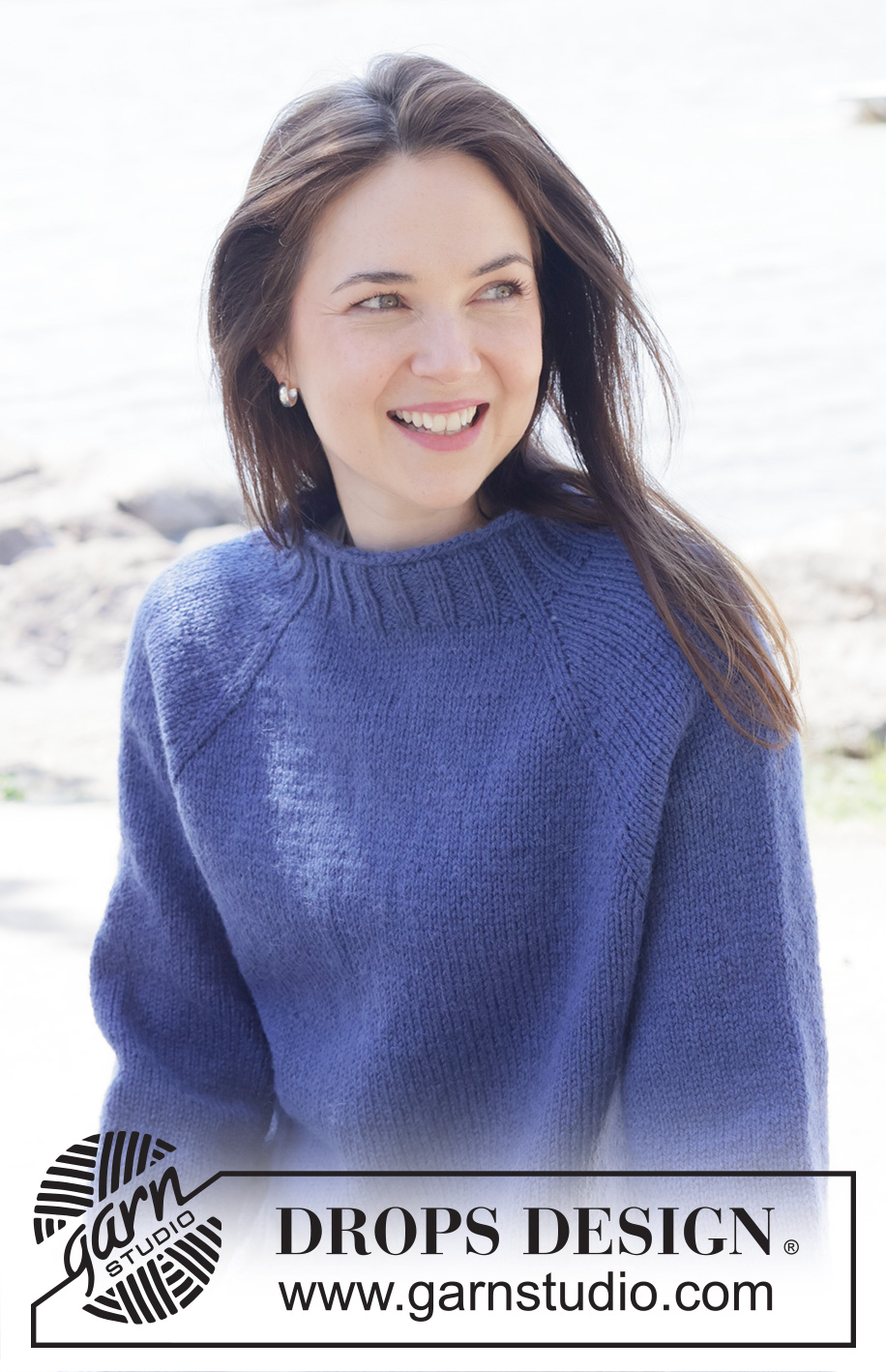
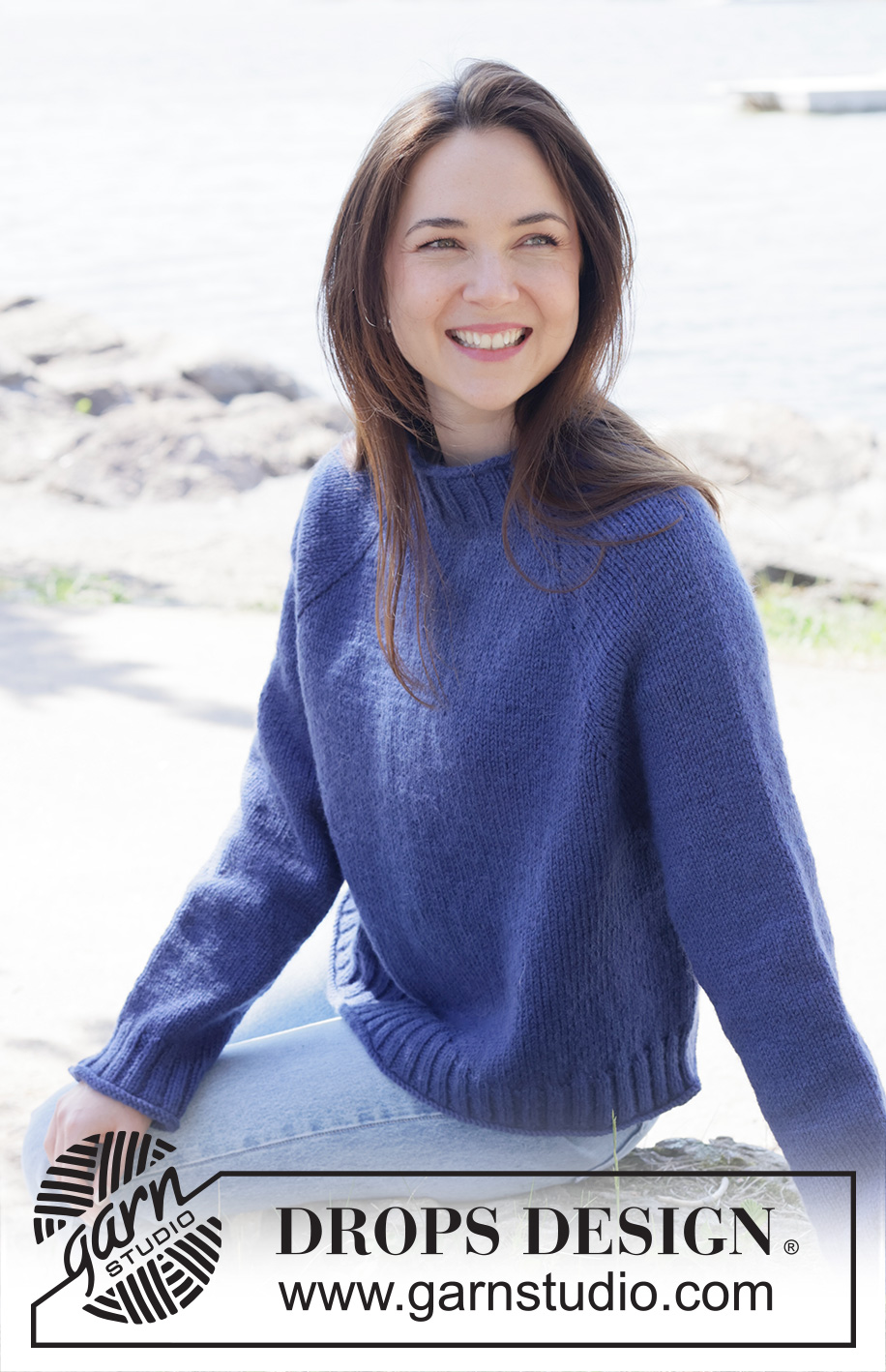

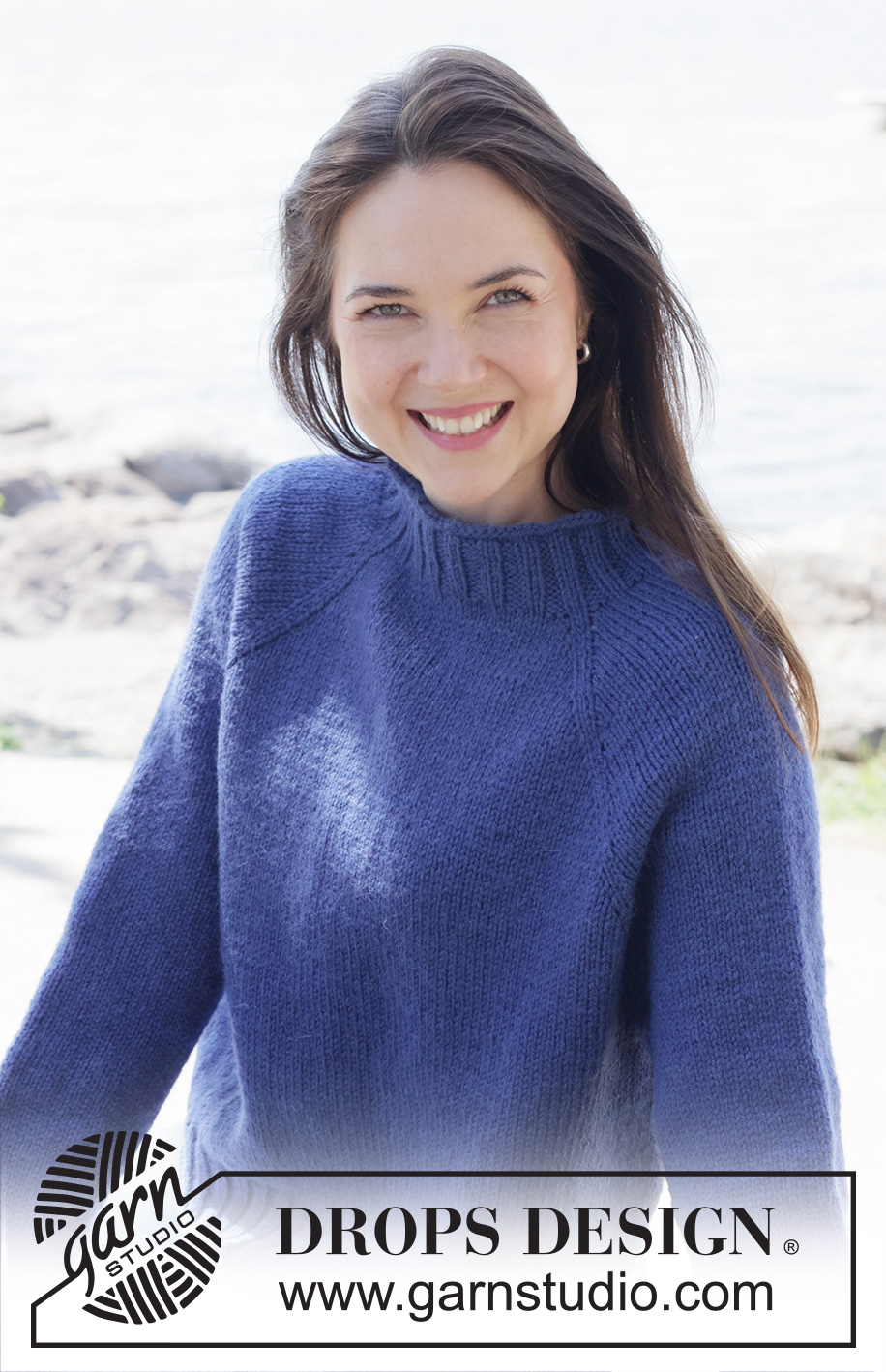
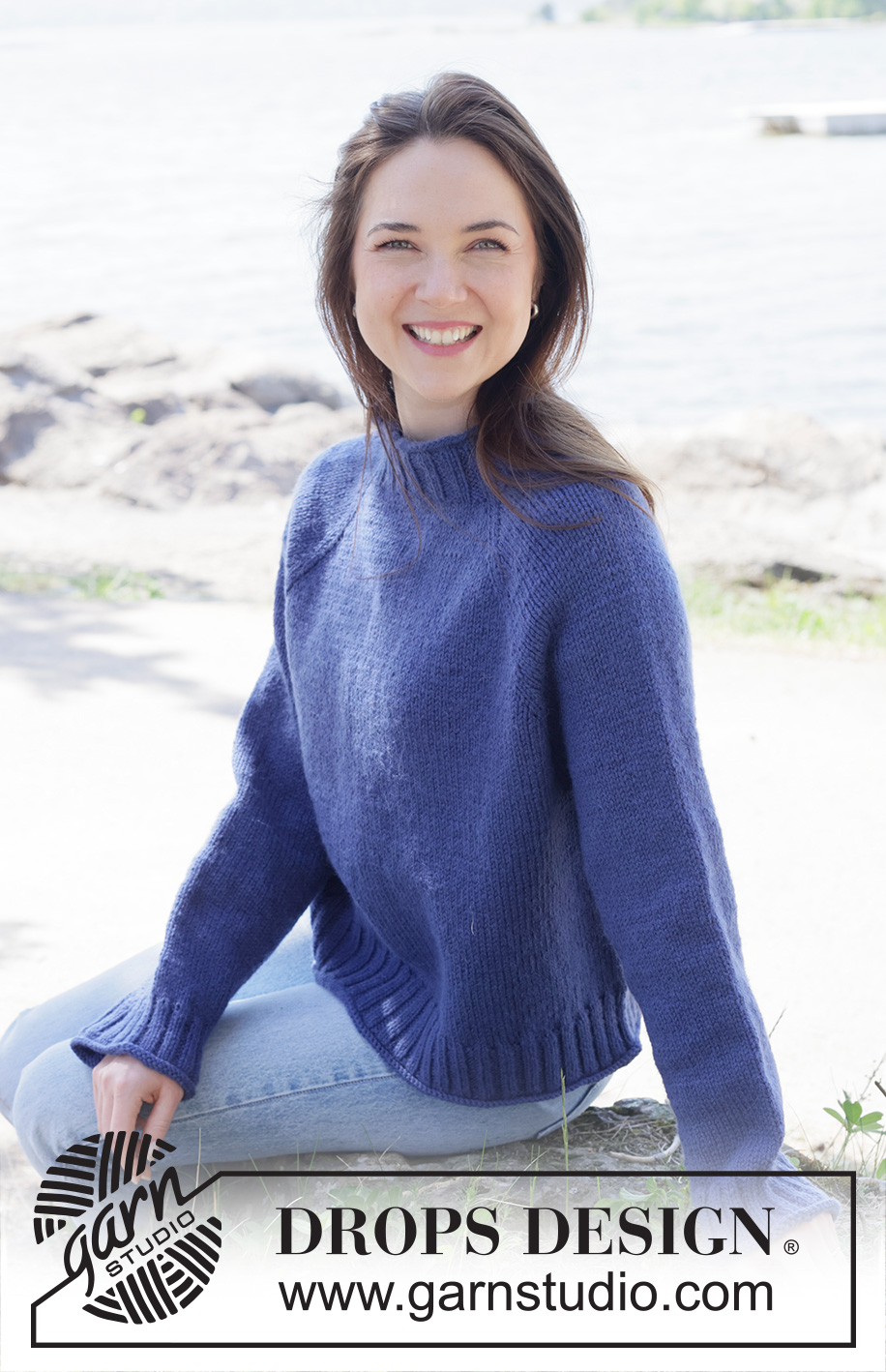

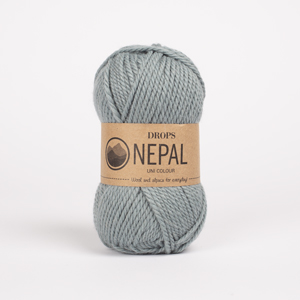
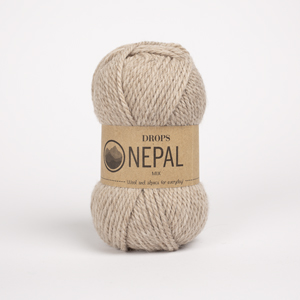



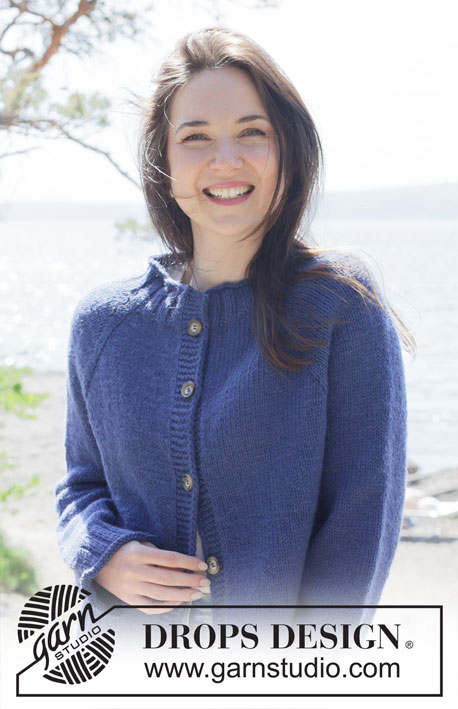














































Post a comment to pattern DROPS 254-39
We would love to hear what you have to say about this pattern!
If you want to leave a question, please make sure you select the correct category in the form below, to speed up the answering process. Required fields are marked *.